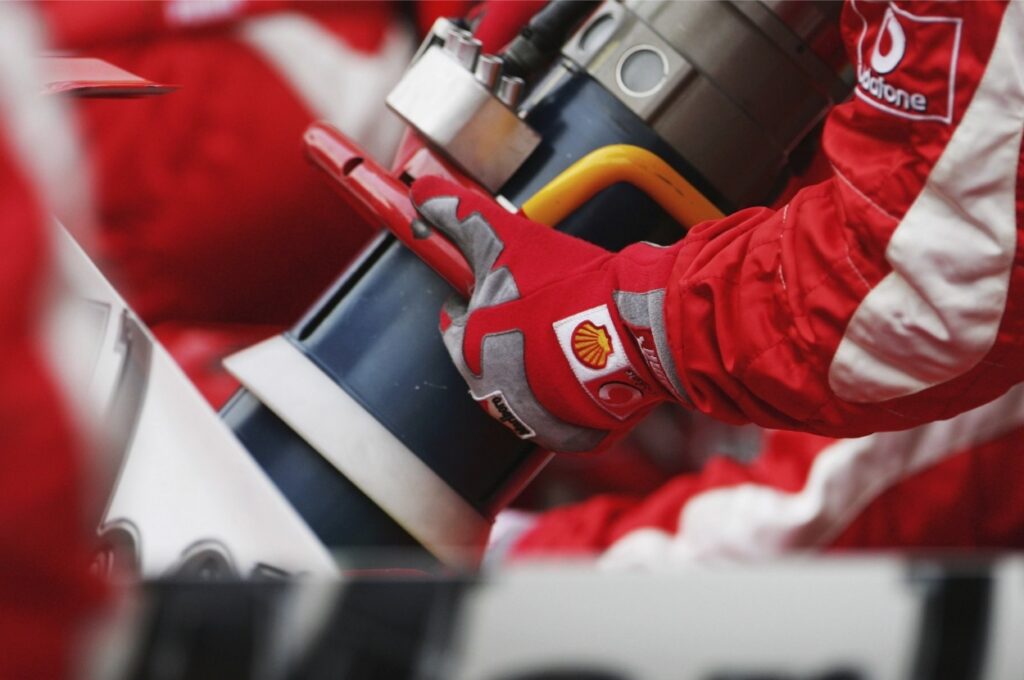The refueling of Formula 1 cars was an important part of the teams’ strategy during races, and many argue that its return would make the championship even more competitive.
The truth is that its return does not seem to be a priority for the FIA, despite the fact that refueling would allow teams to use lighter cars than the current ones, which could make the races even more competitive.

Refueling in F1 is something that goes back in time, and controversy around this topic has been the subject of much discussion. The history of F1 tells us that refueling was introduced in the championship in 1982 when Gordon Murray of the Brabham team discovered that cars could achieve faster laps if they used half the fuel at the start of each race.
However, the measure was banned in 1984 and only returned in 1994, for many, as a decision to stop the dominance of the Williams team, and it remained in effect until 2009, when the FIA decided to end refueling as part of efforts to reduce costs and increase safety.
The end of refueling forced F1 teams to create larger cars so that they could have tanks to carry 105kg of fuel, which is about 142 liters, depending on the temperature, with one liter of this fuel being collected by the FIA at the end of each race.
What led to the ban on refueling in F1?

However, despite the FIA claiming that the end of refueling was partly due to cost reduction, the truth is that safety concerns weighed more, as during 15 seasons of the championship, refueling accidents were numerous, and no fan of the sport forgets Kimi Raikkonen’s car catching fire in 2009, or Jos Verstappen’s Benneton, the father of the current world champion, at the German GP in 1994, or the situation experienced by Felipe Massa with Ferrari at the Singapore GP in 2008, where he left the pits with the refueling hose attached to his car, not to mention Eddie Irvine in 1995 with the Jordan car catching fire while refueling.

Currently, without refueling, the cars are fueled before the race with the necessary fuel to complete the total number of laps of a Grand Prix. However, if a car needs to be refueled during a qualifying session, the operation must take place inside the team’s box.
It is true that F1 has grown significantly in recent years in terms of audience and needs to attract even more fans, but it does not seem right that the path to creating competitive races in the coming years involves the return, once again, of refueling, a measure that would certainly increase the costs for the teams even more and would reintroduce a sense of insecurity in the pits.

Therefore, it is expected that the FIA will not make any decision in that direction, especially at a time when teams already know that from 2026, the cars in the premier category of motorsport will start using synthetic fuels.







